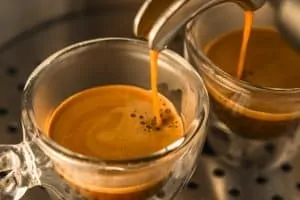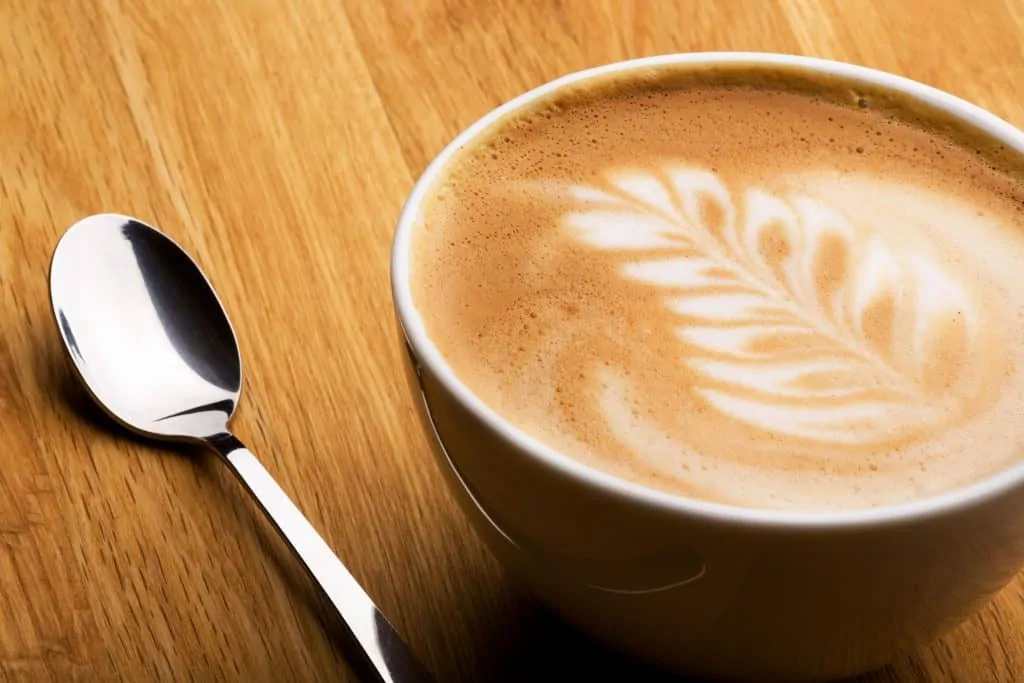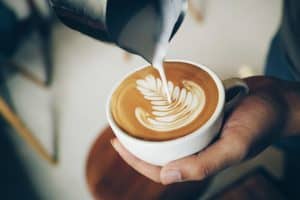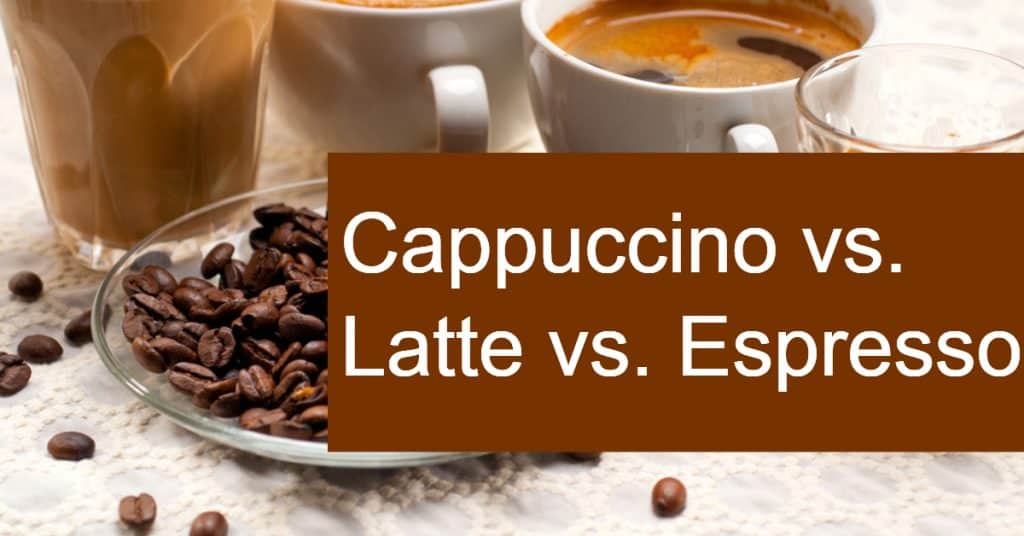Coffee is a drink that almost everyone uses as their wakeup call in the morning or a pick-me-up in the late afternoon. It gives you a buzz of energy that you need to get through a long day.
The coffee can vary in so many different ways from the production of the bean to the way it is prepared. These differences show prominently when you look at espresso vs. cappuccino vs. latte. What is the difference between each of these coffee beverages depending on where you get them; what store, or which coffee you buy, how strong they are prepared, and also with personal preference.
There are many different ways coffee can be consumed, whether you have an espresso, an Americano, a latte, a cappuccino, flat white, a cortado, a macchiato, or the endless other ways you can prepare it. Below we will discuss the differences between the three popular choices of cappuccino, caffè latte, and espresso to see what these espresso drinks are really about and how you have to prepare each one of them to get the full flavor.
Differences between Espresso, Latte, and Cappuccino
Let’s first have a look at what makes latte vs cappuccino vs espresso similar, their difference, and what these different types and flavors of coffee drinks are. First off, all three are espresso drinks so the base for a Latte and a Cappuccino always is at least one shot of Espresso, it’s just that you have Espresso with milk in varying amounts. It is only fair then to start with looking at espresso before looking at the other two espresso drinks that have steamed milk and foam added to the coffee base.
What Is an Espresso?

Espressos originate in Italy but soon became popular in almost all of Europe. The drink is still more popular in Europe than it is in the rest of the world. Espresso is considered a pure way to have coffee and is considered everywhere to be an Italian specialty.
It is an intense experience you have by drinking a mixture of concentrated and strong coffee and steam in a small volume. This form of coffee needs a specific espresso-making machine to exert the required amount of pressure on the water to force it through the ground coffee beans and produce the concentrated shot with its rich flavor.
Espressos are generally thicker in consistency than any other preparation of coffee because of their high concentration of coffee in the water. The process of pushing the water through the coffee with pressure also produces a cream-like frothy foam that sits on top. It’s seen as the ultimate Italian drink globally.
Espressos can be enjoyed in four different sizes; ristretto, single, lungo, and double. A ristretto is ¾ of an ounce and is also known as a short. The most popular choice is the single shot of espresso which is exactly 1 ounce. Next, the lungo or long, which is 1 ½ ounce, and finally the double shot, which is 2 ounces of espresso.
Espresso is the base for many other coffee drink preparations besides cappuccino and latte. These include macchiato, flat white, and all the other varieties you can get in the different coffee shops.
What Is A Cappuccino?
A cappuccino is a very popular coffee drink that came around approximately in the 17th century in Italy. It is made using espresso, steamed milk, and milk foam. A cappuccino’s identifying characteristics are the thick white foam center with a ring of foamed variations of brown. These are formed when the frothed milk and foam are poured over the espresso shot resulting in a unique look and flavor – Does Cappuccino have Caffeine?
This is also where the cappuccino gets its name. It is derived from “Capuchin” friars which were an Italian religious order. It is in reference to the color of their religious clothing. In this context, it referred to the way the color of the drink changed as the frothed or steamed milk is added to the coffee. The layer of foam on top turns a light caramel color when the shots of espresso and milk are combined. – Ever heard of dry or wet cappuccino? What is the meaning of a bone dry cappuccino?
Cappuccinos nowadays have many variations. They can be made with foamed cream or half-and-half (How to make creamy foam when frothing half and half) instead of milk and have many added flavorings and spices to change the espresso drink according to personal taste. Oftentimes, these cappuccino drinks have nothing much in common anymore with the original Italian beverage.

What Is A Latte?
Caffé Lattes are another very popular drink choice for coffee drinkers worldwide. They also originated in Italy, and a latte is prepared using espresso and steamed milk. This type of coffee has a lot of milk (Using Soy Milk in Coffee) compared to any other preparation where you combine shots of espresso and milk. That is also where the latte gets its name. Caffé meaning coffee and Latte meaning milk in Italian, the word literally translates to “milk coffee” – Differences when comparing iced latte vs iced coffee!
This drink has also been changed around by multiple coffee shops based on customers’ tastes and demands. You can get all sorts of variations of a Latte with some of the most popular ones being a mocha latte, where chocolate is added to the drink. Or then, the seasonal favorite, pumpkin spice lattes, which were popularized by Starbucks during the fall season in the US. There are just two examples of variations. Other variations include the addition of matcha, chai, turmeric, or even different kinds of frothed or steamed milk like soy or almond milk.
It’s certainly clear that not all of these are to everyone’s liking. Try some of them out and find out which ones taste better or worse. Additionally, there’s not only the Caffé Latte but also the Latte Macchiato. Both beverages share the ‘Latte’ in their name but differ in preparation and taste.
What Are the Ratios of Milk vs Coffee in Cappuccino vs Latte?
Espressos do not contain any milk, even though they have a layer of light-colored foam on top which is called crema. This foam is created by the three-step process that occurs when the pressurized water is pushed through the ground coffee. The first occurs with the emulsion of water droplets through the oil that is present in coffee, second is the suspended solids in the hot water and the third is, as the process finishes, a layer of gas bubbles are produced by the machine.

Next, it does become a little confusing. If you look at a cappuccino vs latte then the difference is the milk ratios. While the pure espresso has no milk, both cappuccino and latte have varying amounts of steamed milk and foam.
Cappuccinos are espresso drinks that contain a small amount of steamed milk which is topped off with milk foam. It starts with a single or double shots of espresso, then steamed milk, and finally a thick layer of airy foam. The proportions are broken into 1 part of each. 1 part coffee, 1 part steamed milk, and 1 part of foamed milk. A flat white, similar to the cappuccino contains a small amount of steamed milk but is then topped off with a thin microfoam layer.
A latte contains a lot of steamed milk in comparison to a cappuccino or a flat white. The latte is layered with a single or double espresso, steamed milk, and a thin layer of foam to top it off. The proportions of a traditional latte are divided into 6. It is 1 part espresso, 4 parts hot milk, and topped off with the remaining 1 part of the foamed milk. When you compare Cappuccino vs Latte you end up with the latte having a lot more milk.
Do You Need Special Brewers for An Espresso?
Espresso has to be brewed through a machine because of the pressure required to push the water through the machine. The entire premise of an espresso lies in the machine that produces it. The first espresso machine was built by Angelo Moriondo in 1884; it used steam to brew espresso in large quantities rather than in single servings as we have in machines today.
Coffee shops have specialized espresso machines to brew this kind of coffee, mainly because they need it as a base for all other preparations. For home use, you can also get an espresso machine that can be pretty cheap up to hundreds or thousands of dollars for a fully-automatic espresso machine. Espressos on their own have become a popular way to drink coffee, so manufacturers have made it easier and easier for consumers to brew their own coffee at home. There is a wide variety of machines you can get in the market to produce espressos at home. The techniques used to make espresso vary from the kind of machine you have and some do a better job than others.

Why Is the Milk Foamed?
Milk is steamed by inserting water vapors and air into it at hot temperatures. This process of inserting hot air creates tiny bubbles in the hot milk which rise to the top and stick together to form the foam. The reason why milk is steamed (which creates the dry foam) is because this is a much gentler way of heating the liquid rather than having it burning hot. Foam is also important for espresso because it changes the surface tension of the liquid, allowing your taste buds to come into contact with more of the surface of the liquid; essentially, you will have better-tasting coffee.
Additionally, a layer of foam adds aesthetic value to the drinks. The steamed milk foam is also used to create intricate designs on top of coffee that are becoming more popular and more detailed over time. You can now even have your face printed on your coffee!
Is Espresso Stronger Than Coffee?
An espresso is a concentrated suspension of strong coffee in hot water. Because of the fact that espresso is made of concentrated coffee, there is often an assumption that it is stronger than a regular preparation of coffee such as drip coffee – Check out coffee percolator vs drip coffee maker!
It is a total misconception to think that coffee is weaker than espresso. Espresso may be concentrated, but it is much smaller in size than an average cup of coffee. 2 ounces of espresso (two shots) has 80mg of caffeine in comparison to a standard cup (12 ounces) of drip coffee which contains 120mg of caffeine.
Taste-wise, an espresso will be a lot stronger than a cup of standard coffee because of the intensity of the coffee in the water compared to its much more diluted counterpart.
Can You Always Get the Same Strength?
The strength of a coffee all depends on the type of coffee beans you use and the way you brew it. If you keep your coffee beans consistent and the way you prepare your coffee the same every day, you are likely going to get the same strength.
When you look at cappuccino vs latte then you usually have a stronger taste with the cappuccino. That is, once you drank all the layer of foam from the steamed milk on top. The larger amount of steamed milk in the latte makes it taste less strong.
Final Thoughts
Coffee is something people use to get out of bed and as a marker to start their day. It can be prepared in many different ways; it can be had with sugar, with foamed and frothed milk, with cream, or with an array of different flavors. A few additional espresso and coffee-based drinks are a Mocha, Cafe au Lait, and Flat White. We’ll cover specifics of those espresso drinks in other posts!
Understanding the base of all these preparations and espresso drinks is good knowledge to have when you want to impress your coffee-loving friends and colleagues! You can show off your expertise when you offer cappuccino vs latte beverages to your friends. Or, have a nice conversation about your favorite latte or cappuccino with the barista at your coffee shop and discuss how to get the best-tasting layer of foam on your cappuccino vs latte!
Share It!
Please use the image below to share the Cappuccino vs Latte vs Espresso on social media! We appreciate your support!


